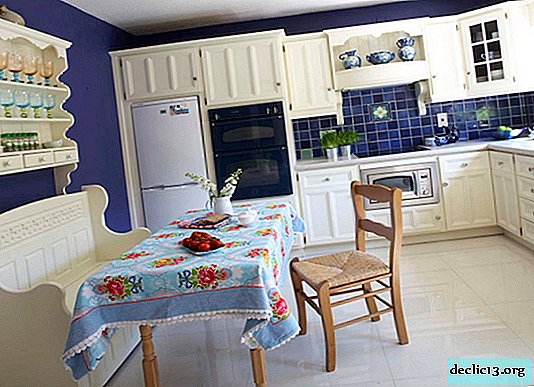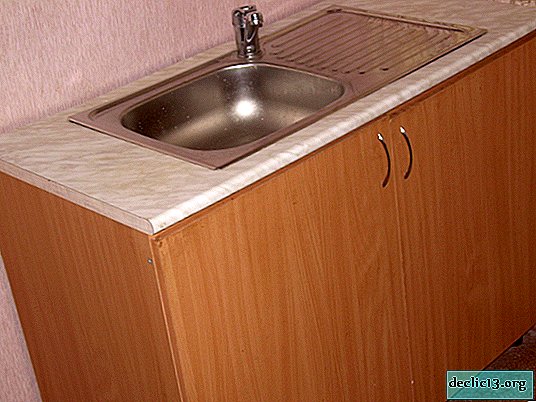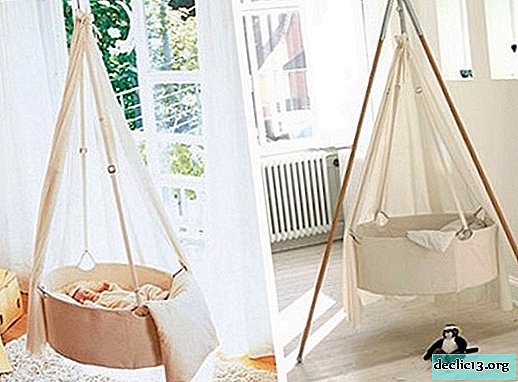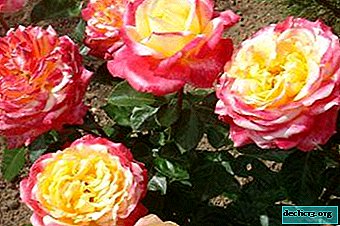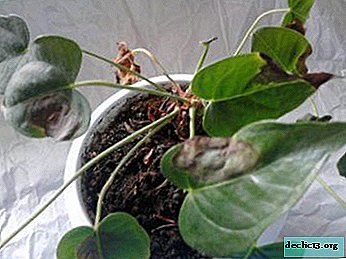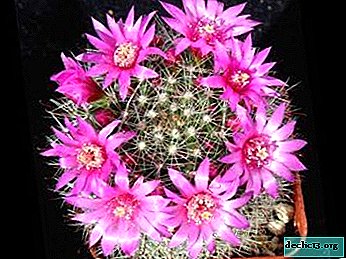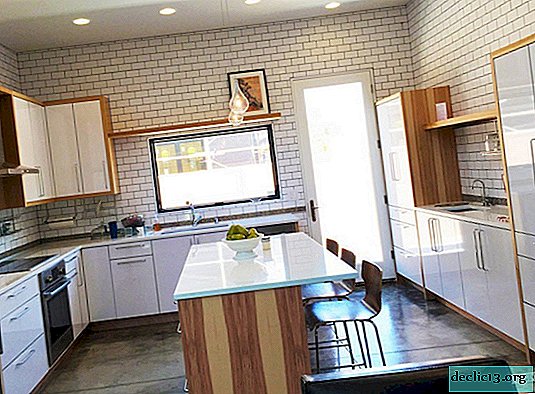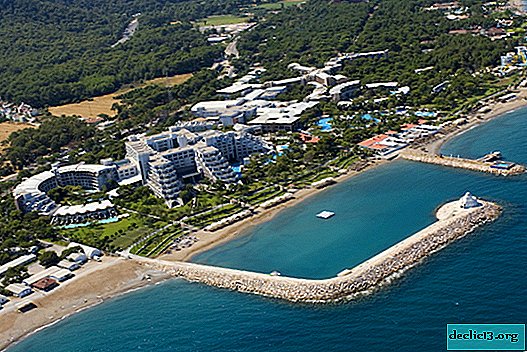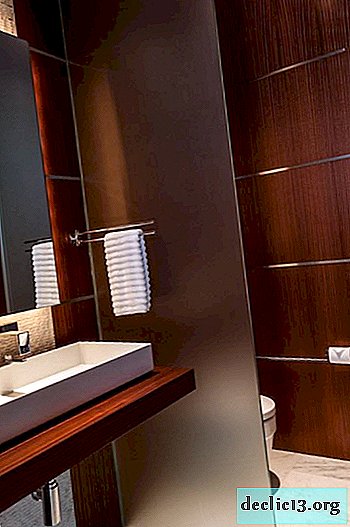Features of planting and care for a primrose perennial: photos of different types of flower and timing of sowing
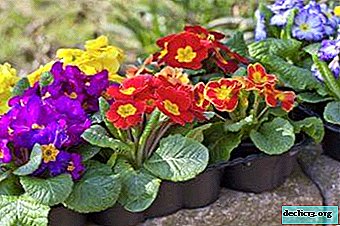
Primrose is one of the most beloved flowers by gardeners.
The bright petals of the plant bloom in early spring, justifying their belonging to the family of primroses.
In the article we will consider the features of planting primrose: find out what conditions are best suited for growing this beauty, how to prepare the soil and the place for planting, other nuances of cultivating home and garden primrose.
Key Nuances and Rules
We learn the general points regarding the planting and care of primrose perennial at home, as well as in the garden in the open ground and see photos of different types of flower.
In the garden
For cultivation in the open air primrose is planted on beds in the form of seedlings. In this case, bushes of small varieties of plants should be located at a distance of 10-15 cm from each other, and large - 20-30 cm.
Seedlings are usually transferred to the ground in May-June.. Not all sprouts should be transplanted - only the strongest and healthiest. The first time after transplanting to the street, it is recommended to cover the primrose with agrofibre at night until the threat of frost passes.
The primrose does not like open wide open spaces, therefore, calculate the distance between the bushes in such a way that in a dissolved adult state they close together. If seedlings are grown from seeds, garden perennial primrose blooms in the second or third year after rooting, the main thing is proper care.
 As a rule, primrose in the open air grows without any difficulties. It is important to monitor the soil on the bed - the soil should be constantly moderately moist, loose, and free from weeds. Get rid of weeds after watering - weeds can be easily removed along with rhizomes from moist soil.
As a rule, primrose in the open air grows without any difficulties. It is important to monitor the soil on the bed - the soil should be constantly moderately moist, loose, and free from weeds. Get rid of weeds after watering - weeds can be easily removed along with rhizomes from moist soil.
If there is heat, watering should be increased - approximately, twice. On average, one liter of square bed during irrigation should take three liters of water.
The plant needs top dressing - the concentration of minerals in the solution should be weak, less than what is written in the instructions. The frequency of fertilizing is once a week from the moment the first leaves appeared until the primrose blooms completely.
Do not lean on nitrogen compounds, because in this case the green mass will be well formed, but primrose will not want to bloom.
At home
Indoor primrose is grown from seeds. Material for planting can be either purchased at the store or prepared independently. Note that only fresh seeds are required to be planted, since they quickly lose their germination ability.
To seed better sprouted, it is recommended to stratify them first - to subject them to cold treatment. At home, a refrigerator is ideal for this purpose. After stratification, the hardened seeds are planted in boxes, after germination and the appearance of the first two or three leaves, they are dived into the pots.
Caring for primrose at home is also straightforward: you need to regularly water the plant, fertilize it, loosen the soil in the pot and, preferably, mulch. Watering young plants (grown from sockets) in the first two weeks after rooting is especially important.Nurturing conditions
We learn the main points regarding the planting of primrose - how and when it is best to sow, as well as those conditions that need to be created for better growth and development of the plant.
Soil and fertilizing
So how to plant a primrose? Primrose loves loose, well-moistened soil. Waterlogging of the substrate should not be allowed, since in this case the roots of the plant will begin to rot. The soil on the bed should not be dense, since such soil will strongly retain water. This fact can be a direct cause of decay of the roots of the plant.
 Primrose is fed with usual mineral formulations - but in weaker concentration than indicated on the package. Do not forget about top dressing - for a plant, additional nutrition is very important, because in a short time the primrose should completely bloom, bloom, and form seeds before full ripening.
Primrose is fed with usual mineral formulations - but in weaker concentration than indicated on the package. Do not forget about top dressing - for a plant, additional nutrition is very important, because in a short time the primrose should completely bloom, bloom, and form seeds before full ripening.
If the plants are located in the garden on the garden, then in the spring for the first time it is recommended to feed the bushes with a weakly concentrated solution of slurry (1 liter of slurry per 10 liters of water). The resulting fertilizer must be individually poured under each bush. Then feed the primrose, focusing on potash mixes.
Lighting
It is best to choose areas protected from direct sun.. An excellent place for primrose will be a shadow near growing on the plot of fruit spreading trees: pears, apple trees. Note that only varieties of alpine primrose can safely and without danger to their leaves and flowers grow in open sunny glades.
If the primrose grows at home, place the pot on the south or western windowsill. Well, if grown in the garden, then the best garden bed is on the west or north-west side of the garden.Humidity
Primrose must be watered regularly and in sufficient quantity. Avoid busting with moisture - the roots of the plant are quite delicate, and with excess moisture can rot.
Temperature
Primrose loves coolness. The optimum temperature for its cultivation will be a range from +12 to +15 degrees. To make the plant easier to tolerate summer heat, water it more often.
How to plant: instruction
Note that plant seeds tend to lose germination extremely quickly - therefore, in order for the primrose to ascend safely, it is necessary to use only fresh planting material for sowing. Pay special attention at this point when you buy seeds at the store.
 If you have your own planting material, it’s much easier here: you can be sure of its freshness. It is recommended that you plant as soon as you have harvested the seeds.
If you have your own planting material, it’s much easier here: you can be sure of its freshness. It is recommended that you plant as soon as you have harvested the seeds.
- Seeds are planted on the surface of an earthen substrate, consisting of the following components:
- sheet land - two parts;
- river sand - one part;
- sod - one piece.
There should not be more than 5 seeds per 1 cm2 of substrate.
Planting material of primrose does not require deepening: the seeds are simply pressed to the surface of the soil.
- The soil where the seeds of primrose are planted must be carefully placed in a bag of polyethylene and put in the freezer for three to four weeks. Thus, the seeds are stratified and hardened.
Plant varieties such as small-toothed primrose and ordinary primrose do not need stratification.
- After the indicated time (after a month at most), the bag of seeds is taken out of the freezer, and placed in the same form on the windowsill. At the same time, it is necessary to begin to water the soil a little, so that the substrate would always be slightly moist.
Attention: best and faster primrose seeds will germinate at an external temperature of + 16-18 degrees.
- When the seedlings begin to appear, the package should be slightly opened to accustom young plants to the air. After two weeks, the package is recommended to be completely removed so that the seedlings continue their development already completely in the open air.
Note that primrose seedlings grow extremely slowly and sluggishly. After the first 2-3 leaves appear, the plants must be dived into boxes. In the future, carry out a dive whenever you notice that the plants became crowded. Before planting in open ground, seedlings should be grown for two years. We wrote in more detail about growing primrose from seeds here.
Types of flowers with photos
Consider the features of planting various popular types of primroses and photos of indoor and garden plants. We also find out the points regarding their care.
Ushkovaya

The seeds of this primrose variety are best germinated when planted in the fall (late October – early November). As for the spring planting, it is better to carry it out in February-March. Before planting, place the seeds for a month (3 weeks possible) in the refrigerator for stratification. The substrate is suitable standard.
As for care, the primrose is unpretentious in this regard. It is important to water the soil in time, loosen it, eliminate weed grass from the beds. Fertilize the ear primrose three times during the growing season:
- in the spring;
- 14-20 days after the first time;
- at the end of July.
Japanese

This ornamental plant is best propagated at home by dividing the bush. The procedure is carried out in the spring: rosettes with young leaves are separated from the mother plant, and then rooted as independent instances.
Attention: you should know that only those bushes that are at least three to five years old can propagate by division.You can propagate the plant with seeds - germination is pretty good, but with the division method, a positive result is more predictable.
As for leaving, then Japanese primrose needs enough moisture and shading from the sun. Keep in mind that this plant is quite tall and massive, so there should be enough space in the pot and on the bed.
Scottish

This variety of primrose is propagated by both seeds and root division. If the division method is chosen, then it is better to implement it in the fall, so that young plants can take root before the onset of cold.
Sowing seeds of Scottish primrose also occurs in the fall, while they are still fresh. You can plant immediately in the ground, or at first for wintering in boxes, and in the spring already move to the ridges. Note that young plant seedlings are extremely demanding on soil moisture, so do not forget about regular watering.
As for general care, it is standard: watering, loosening, top dressing. Scottish primrose growing in the garden gratefully responds to feeding with a weak solution of bird droppings, reacting to such additional nutrition with rapid picturesque flowering.
How to deal with the plant?
After the flower has taken root, most of all it needs regular and quite plentiful moistening of the soil. The plant does not tolerate drying of the upper layer of the substrate, so try to prevent this.
We note, however, that an overabundance of moisture should also not be allowed, since this fact is dangerous for the roots. In summer days, water the flower 2-3 times a week, and in cool weather it is enough even once during the same period.After moisturizing procedures, the earth must be loosened.to provide oxygen to the roots of primrose. Thus, the plant will grow much faster. It is also recommended to mulch the top layer of the substrate using old nutrient peat.
If you planted a flower in the fall, it is recommended to cover the garden in winter with fallen leaves and agrofiber to protect young seedlings from freezing. Read how to properly prepare a primrose for wintering.
Seasonality
If we are talking about a perennial plant, then it is planted in the spring or autumn, and transplantation into the ground is usually done in the fall the next year. If you chose to plant a plant in spring, it is recommended to stop at the end of May.
Disease
 If the primrose soon after planting and begins to hurt, in most cases this comes from shortcomings when caring for the plant. Among the most common diseases of a young plant, the following:
If the primrose soon after planting and begins to hurt, in most cases this comes from shortcomings when caring for the plant. Among the most common diseases of a young plant, the following:
- root and stem rot (due to overflow with watering);
- spotting (contagious bacterial disease);
- cucumber mosaic (virus).
All these diseases are manifested mainly by spots on the leaves. Therefore, in order to prevent the spread of infection and death of flowers, immediately remove the affected leaves, whatever the nature of the spots on them. You can spray with fungicides and insecticides - both for the purpose of treatment and prevention.
Conclusion
So, we learned how to plant primrose in the garden and at home. As you can see, there is nothing complicated in the procedure: the plant can be propagated both by seed and by root division.
Having correctly planted, and continuing to competently look after the plant, you can soon get a wonderful ornamental shrub, for a long time pleasing the eye with beautiful flowers.



